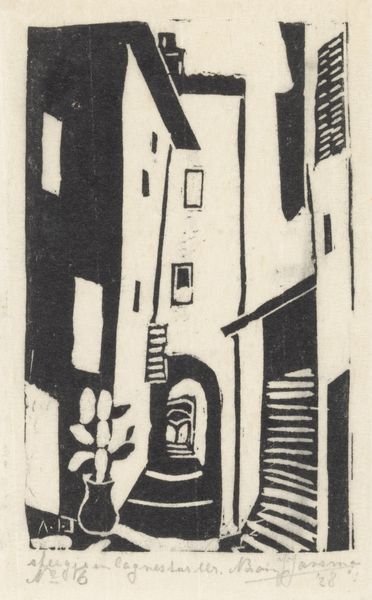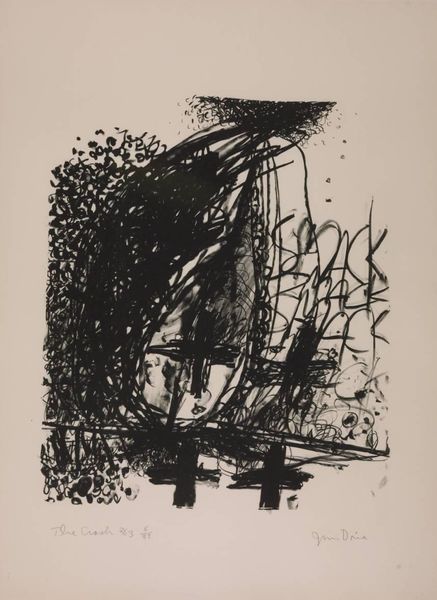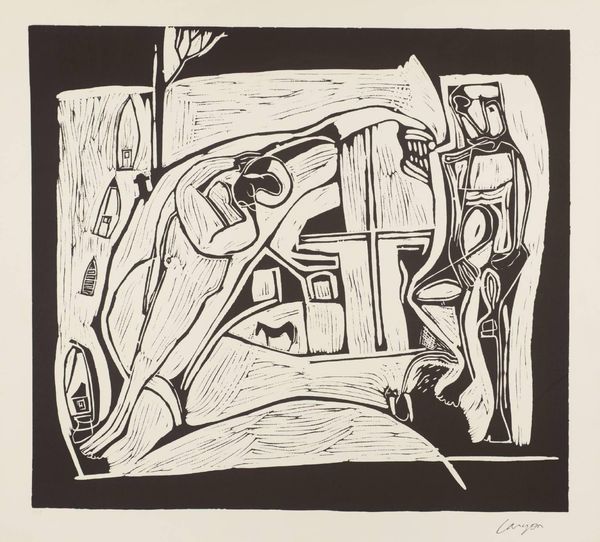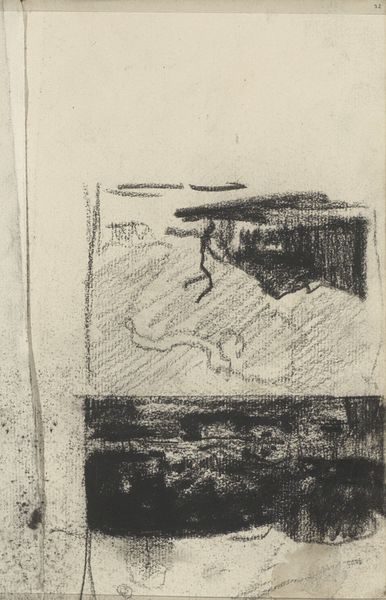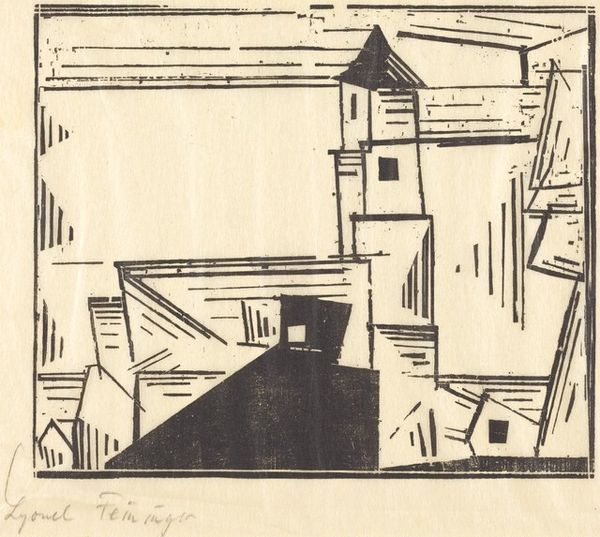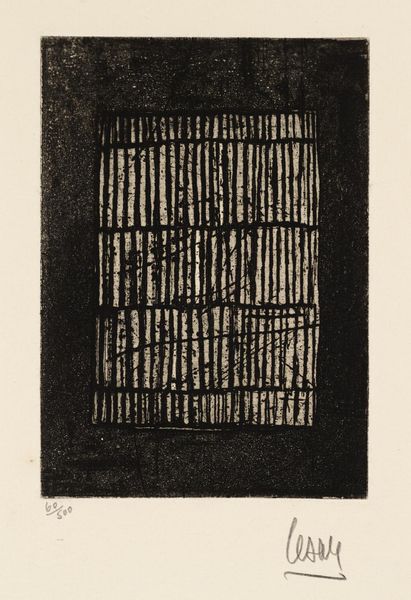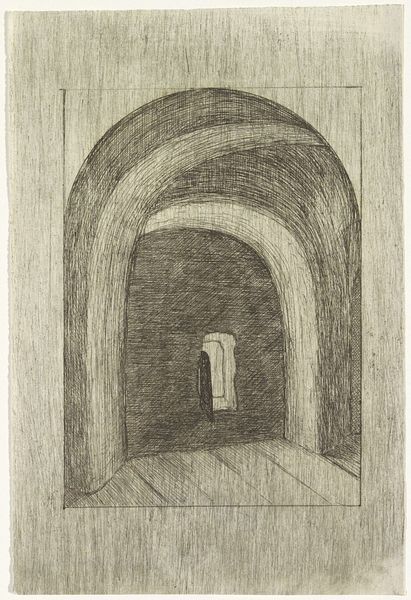
drawing, ink
#
drawing
#
quirky sketch
#
pen drawing
#
pen sketch
#
personal sketchbook
#
ink
#
ink drawing experimentation
#
geometric
#
pen-ink sketch
#
pen work
#
sketchbook drawing
#
sketchbook art
#
modernism
#
initial sketch
Dimensions: height 135 mm, width 101 mm
Copyright: Rijks Museum: Open Domain
Editor: Here we have Leo Gestel’s "Raam met tralies," created between 1934 and 1936. It’s a drawing in ink. The sketchiness is striking. What stands out to you when you look at it? Curator: The materiality here is fascinating. We're looking at humble materials – ink and paper. Consider the economic context of the 1930s. Gestel is making art, but also participating in a material reality shaped by limited resources. Does this simplicity speak to you in terms of production and consumption? Editor: Definitely. It feels very raw and immediate. I also wonder about the repetitive, almost frantic linework used to depict the wall – is that significant? Curator: Absolutely. That's a key element of the process. Think about the labour involved in creating that texture. Is it decorative, or does it signify something more? Is he drawing our attention to the brick making process itself? Are we considering labor not just in the artistic act, but also in its relationship to the wall or building? Editor: That's a new way to consider it! I was so focused on the image; I wasn’t thinking about what its creation meant in terms of labor, or as a material object. Curator: The material and the act of making are inseparable. Gestel isn't just representing a scene; he's engaging in a dialogue with the limitations and possibilities inherent in the very materials he uses. What are your thoughts now about the tension between fine art and the means to its making, now that you recognize this element? Editor: It makes me appreciate the work on a whole other level! It is so easy to overlook what went into the artwork itself. Curator: Agreed! There's a profound connection between process, material and meaning to be observed.
Comments
No comments
Be the first to comment and join the conversation on the ultimate creative platform.

